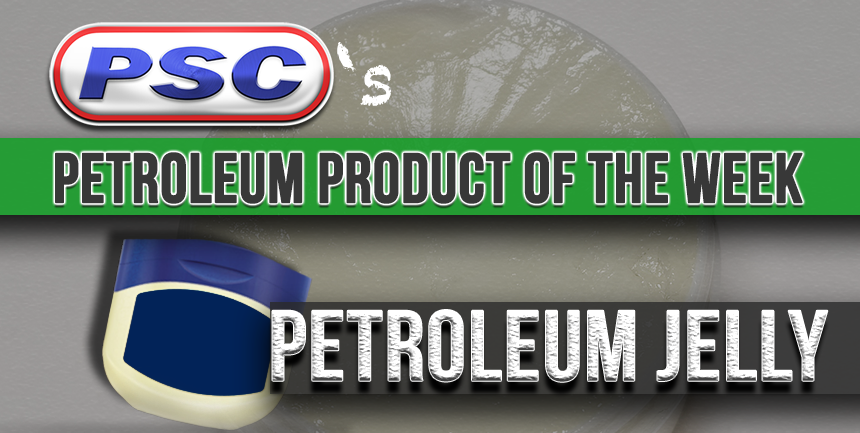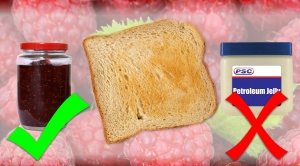Petroleum Product of the Week: Petroleum Jelly
By on Jul 22 2016

This may be a little obvious, but in case anyone was wondering, petroleum jelly
is actually made from petroleum.
(Thank you, English language, for actually making sense for once.)
"...somewhere in the Vasoline*"
Petroleum jelly is probably most recognized by the brand name Vaseline, and for good reason this was the first petroleum-derived topical ointment on the market (and it still retains its infamy today).
As with all the best petroleum-derived products, the history of Vaseline begins in the late-1800s in Titusville, Pennsylvania the birthplace of the modern oil industry. Once petroleum was discovered and a means to distill it was identified, the oil boom began.
Around 1859, early oil rig workers came to dislike a paraffin-like substance (called rod wax ") that formed on their rigs because it caused their equipment to malfunction. Despite the rod wax wreaking havoc on the rigs, some series of circumstances led workers to smear the gooey residue on their skin to promote healing for cuts and burns (because really, why wouldn't they?).
Enter Brooklynite Robert A. Chesebrough.
Chesebrough was a chemist and no stranger to oil refining: before petroleum made it big in the world of fuel, Chesebrough worked with distilling sperm whale oil for fuel use ( you can read about whale oil here). Since the petroleum distilling essentially rendered his work obsolete, he decided to travel to Titusville, Pa. himself and see if he could commercialize (and therefore profit from) the important substance that impacted his own importance.
The rig workers' propensity for greasing their wounds with the black rod wax piqued Chesebrough's interests and he decided that he wanted to refine it and explore its potential. After months of experimentation, he discovered that he could create a light-colored gel by distilling the lighter, thinner material from the rod wax.
Cheseborough patented the process of making petroleum jelly " in 1872. To promote his product, he travelled around New York and burned his skin** to demonstrate the healing properties of his petrolatum ointment, which he named Vaseline.
The Wonder Jelly

Not all greases, lubricants, and jellies are created equal (which is why we don't recommend substituting your petrolatum for, say, Chevron Delo ESI, or vice versa!). While derived from petroleum, this soft paraffin medicinal ointment is not the same type of product as industrial greases (which are specifically formulated for use in machine and vehicle components, not people).
What makes Vaseline different is its purity: according to the company, Vaseline is made from base oils and waxes that have been refined via a proprietary triple purification process involving distillation, de-aeration, and filtration, " ensuring a completely pure and safe product. Petroleum jelly is recognized by the FDA as an approved over-the-counter skin protectant and remains widely used in cosmetic skin care, even after 140+ years.

A verified medical use for petroleum jelly is to protect and prevent moisture loss of the initial post-operative period following laser skin resurfaces. On a more day-to-day application, petroleum jelly's ability to prevent moisture loss makes it a popular product used to prevent chapped hands and lip and is often found as an ingredient in lotion. It can also be used as a skin lubricant to prevent friction between skin and clothing, especially in athletes.
Petroleum Jelly has a wide range of uses outside of the human body, too, including but not limited to coating corrosion-prone items; an inexpensive water repellent; to finish and protect wood; to condition and protect smooth leather products; lubricate zippers; and moisturize dog paws.
So the next time you reach for a jar of good old Vaseline, know that even though it is derived from the same petroleum that enables your car engine to run, greasing up with petroleum jelly isn't the same as using crude oil--and the Vaseline products on the shelves are much more refined than the rod wax 19th century oil workers rubbed on their wounds.
Progress is slick.
*Lyrics from "Vasoline" by Stone Temple Pilots
**Please do not try this at home.
Sources:
https://en.wikipedia.org/wiki/Petroleum_jelly
https://en.wikipedia.org/wiki/Vaseline
http://www.vaseline.us/





